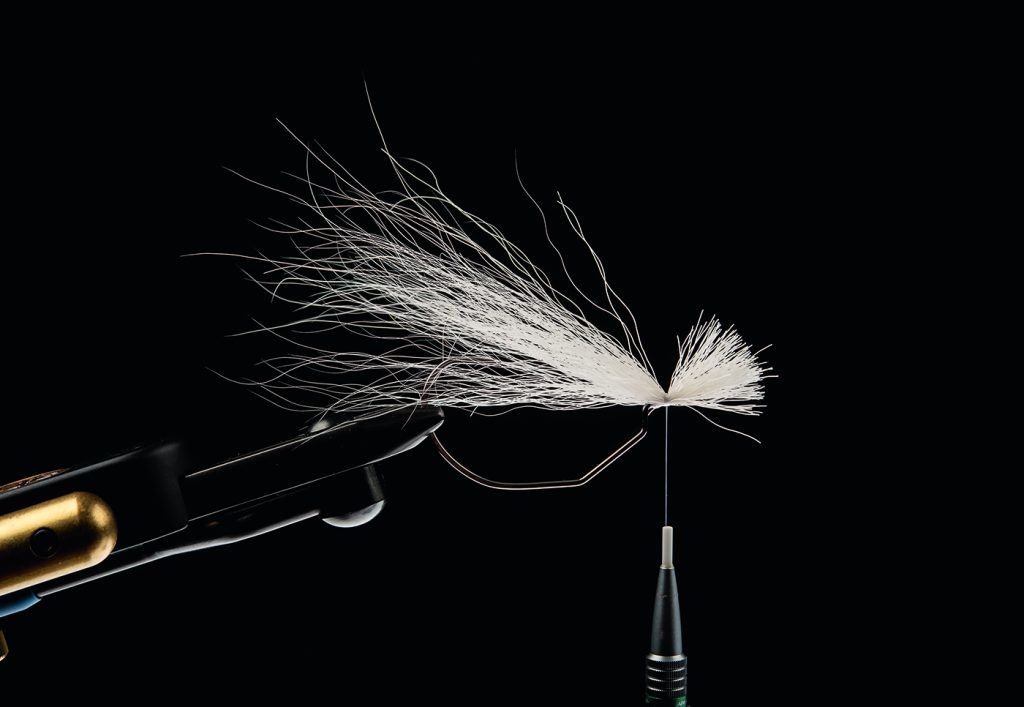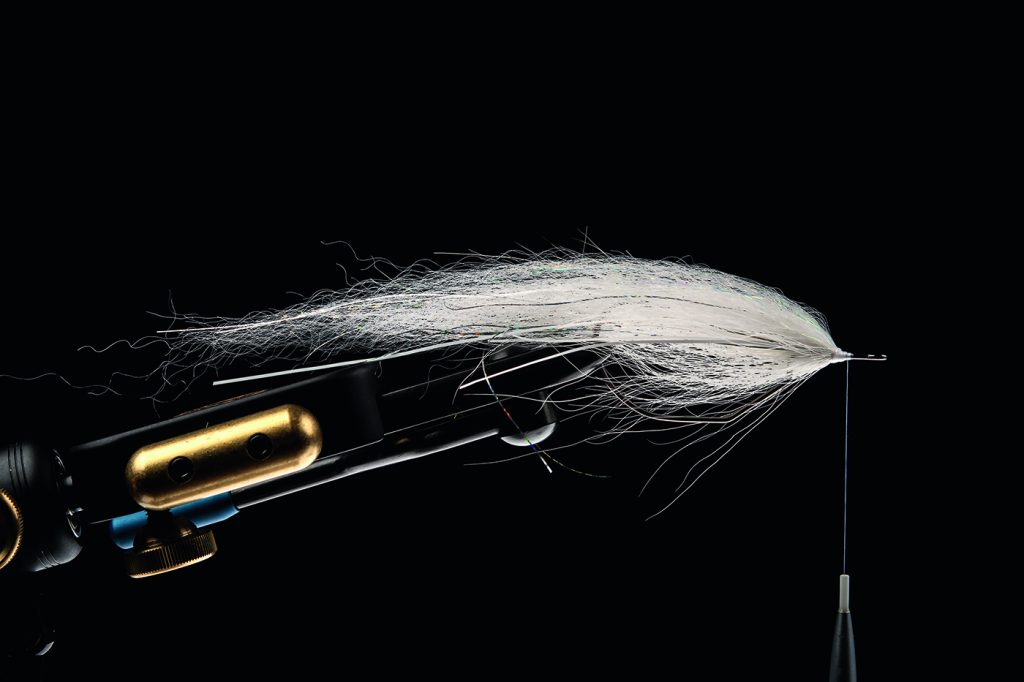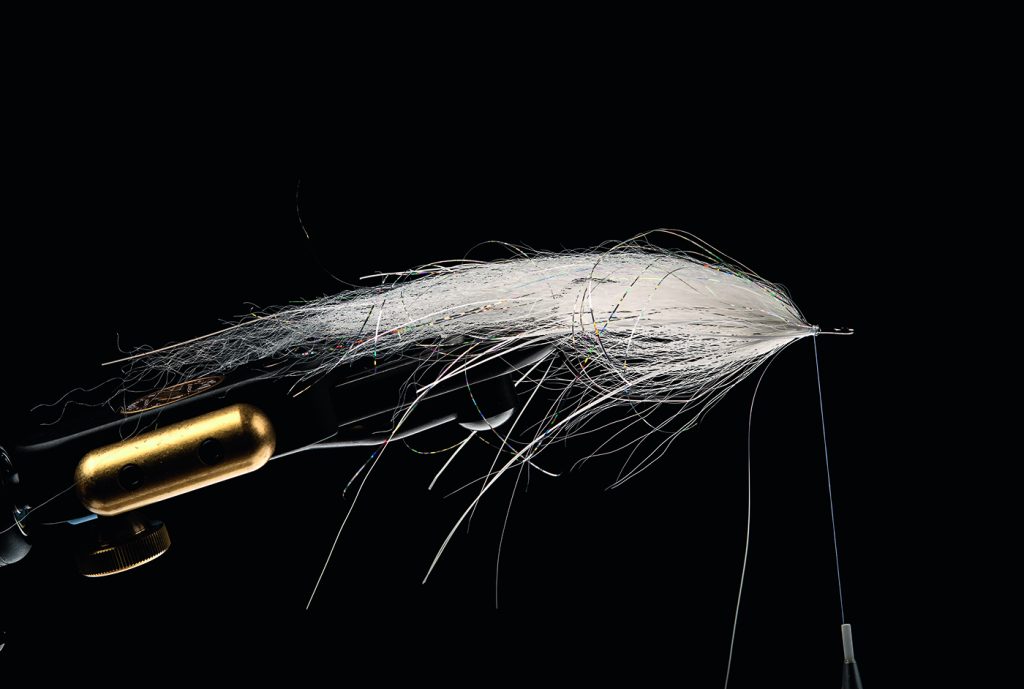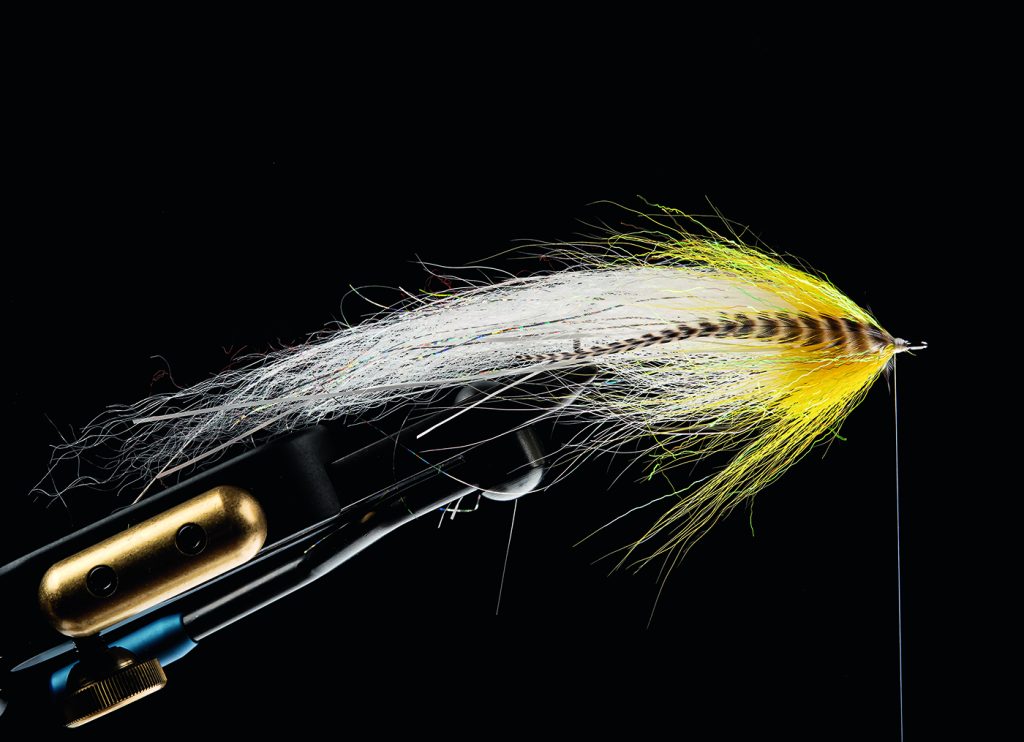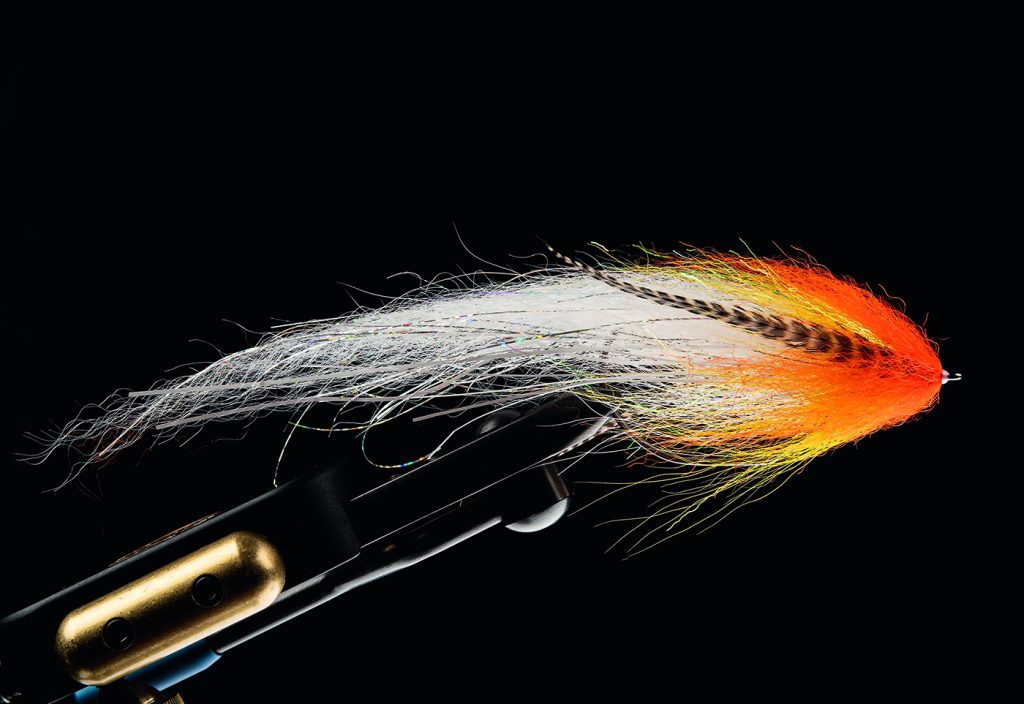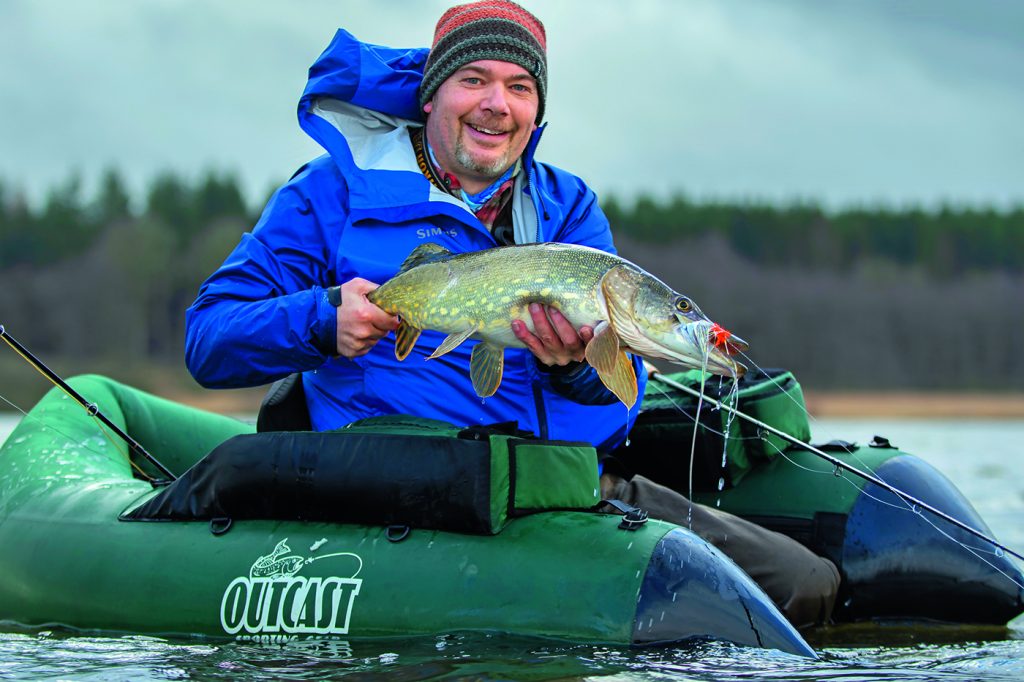
International fly tiers have contributed to a solution of an old problem. How to make sure you don’t catch weed, but still catch predators. Here’s the answer together with an effective pike fly.
By Peter Lyngby
(this artickle has been published in the danish magazine “Sportsfiskeren” and the online magazine “In The Loop Magazine”)

Most fly fishers dream of fishing the pike fly enticingly across the surface. Briefly, of course, because the monster pike is tuned in on the fly. Before you know the beast inhales the fly in a big splash. Pike fishing can be like that, but rarely is. Pike can be fished almost year round, but that also means that the fly fishers needs to adapt the strategy. Sometimes to fish near the bottom, sometimes casting into the weeds or among the water lilies or along the growing weed. In other words, fly fishing for pike means close contact between hook and snags. Pike flies are often expensive in materials and time spent at the vice, so preventing snags is a high priority.
Weedless of “pikeless”
Fly tiers have tried for decades to resolve the conflict between hook and weed. A common solution is a loop of heavy monofilament from hook eye to hook bend, covering the hook point. A “V” of heavy monofilament from the hook eye to the hook point is another solution. The more effective they are at reducing snags, they naturally reduce the chance of a hook up as well. Even in a aggressive strike the weed protector can cause the fly to bounce off on the rows of teeth and other hard parts of the pike’s mouth. Sometimes the pike’s teeth simply grab the materials and not the hook and if you’re lucky, the hook will grab hold during the fight. In these situations an exposed hook point is also preferable.
Pike fly fishers who have seen a big pike strike a weed-protected fly and not hook up, often end up turning their backs to weed protecting solutions. A choice between the plague or cholera.
Upside down
Recently creative fly tiers have been taking closer looks at their gear fishing predator colleagues. It’s common knowledge that a jig head will turn the hook point up to reduce snags on the bottom. For the same reason bend-back flies are often used when fishing deep, near the bottom. The hook can be weighted to encourage the hook point to turns upwards and many fly tiers will bend the hook shank, so the wing helps steer the hook point up. Both work well on smaller flies, but are less ideal on big pike flies.
Specific hooks for pike flies that help negotiate this problem have never been on the market, despite the growing popularity of pike- and musky fly fishing in North America.
Texas
The best suited hooks so far have different versions of hooks, intended for Texas rigs, where a silicone lure is fished with a weight and the point of the hook secured inside the silicone lure. These hook are available in large sizes and are strong, but they come with disadvantages for the fly tier. The characteristic Z-shape near the hook eye is designed to hold in place the rubbers lures, but leave little space for the fly tier. But what’s worse is that the Texas style hooks have the hook point in line with the short shank at the hook eye, which reduces the chance of a hook, when fishing for pike. Once again the dilemma, because it’s also this ver design that can make a fly weedless as soon as the fly is tied behind the hook eye.
For years creative fly tiers have been experimenting designing flies on these hooks. Many interesting flies have emerged, but they have all come with the compromise between weedless or “pikeless”. Not to mention the time spent at the vice incorporating shanks, to get a little more space to tie the fly on.

An example on Paul Monaghan’s mono-rig, which he used to use on Texas hooks. A tail is attached to the mono-loop in the back, while the fly is tied in the short shank on front.
International cooperation
When it comes to modern, innovative predator flies, Gunnar Brammer (US) and Paul Monoghan (UK) have made quite a name for themselves lately. Paul Monoghan usually designs his flies for pike, perch and zander, while Gunnar Brammer is an expert on musky- and bass flies. They share the search for the perfect solution on weedless flies and their experiments have in many ways led them in the same direction. The collaboration with Ahrex Hooks began with the design of the Texas hook, but the goal was to avoid the shank blocking the hook point. A the same time a more substantial shank to tie the fly on was a priority. Like all hooks several sizes were needed and last, but not least, the duo wanted the hook to easily accept rattles. Rattles can be very effective when fishing near the bottom and it’s never been easy to fix them on the curved Texas hooks. With these demands it was on to the designing.

A typical Texas hook design at the top and the Ahrex PR378 GB Swimbait hook below. Notice the hook point raised above the shank and how the straight parts of the shank facilitates tying it on rattles.
Ahrex PR378 GB Swimbait
The result of the collaboration between Paul Monoghan and Gunnar Brammer landed in tackle stores across the world in the fall of 2020 in the form of PR378 GB Swimbait. Imagine that the solution to this old problem was to be found in a collaboration between America, England and Denmark.
Following the release of the hook, the popularity of the two gentlemen and seen vices in Europe and the US red hot with activity. Brammer and Monoghan both have their own YouTube channels, where they post tying videos on a regular basis. There’s already plenty of inspiration to be had with flies tied on the PR 378 GB Swimbait hook. The goal of designing and producing a weedless hook on which all types of pike flies can be tied seems to have succeeded.

The fly is called Reverse Bulkhead and is inspired by Bob Popovics’ Bulkhead Deceiver. The classic baitfish profile is built up with buck tail and synthetic fibres and the reverse-style gives a light weight, yet big fly. The reverse-tied fibres provides the illusion of size, but doesn’t soak up water and become heavy to cast.
The drop shape of the Reverse Bulkhead is built up around the hook point, which makes the fly weedless. But unlike the Texas hooks, the design of the PR 378 allows the dressing to collapse when a pike strikes and expose the offset hook point.
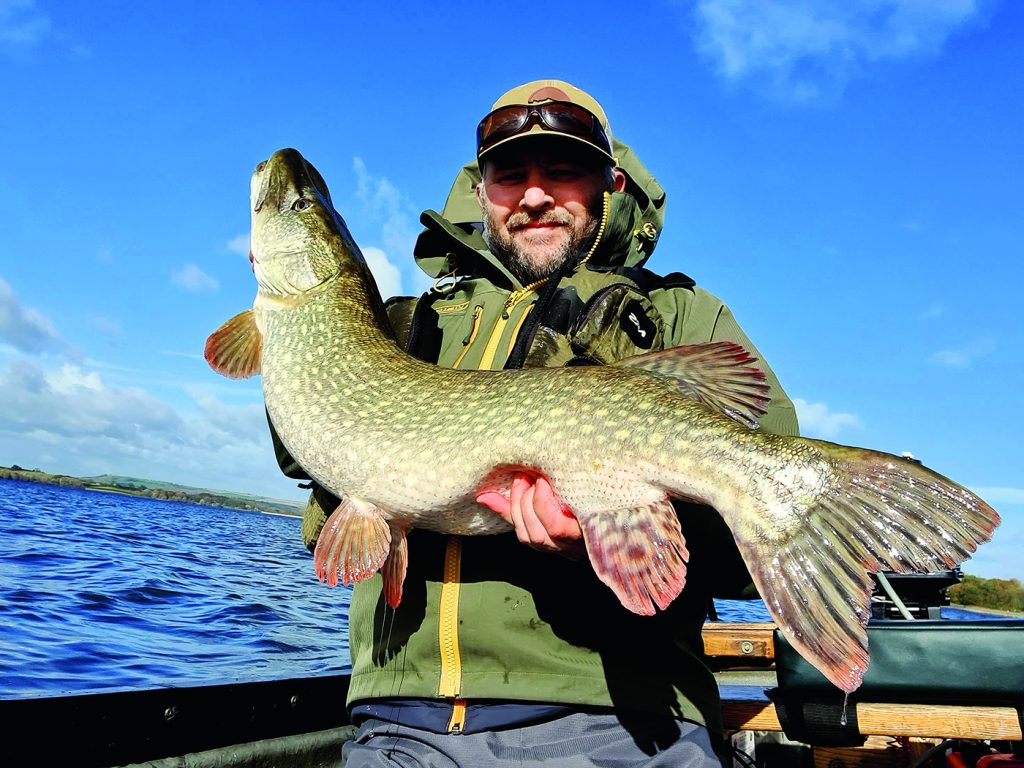
Paul Monoghan considers this a simple fly, but still offers these pointers.
“Pay attention to the first step when attaching the buck tail. Use buck til from the lower part of the tail, where the hairs are hollow. Ensure a good distribution around the hook shank. The buoyant hair will help balance the fly in the water. I often use a synthetic called Kanekalon for my baitfish flies. It’s not available in the tackle stores as it’s made for human hair extensions, but it works well in big flies and it’s cheap. After tying the fly it might look a little messy, but wet the fly under faucet when the glue is dry. That will give the fly its final shape the it dries.”
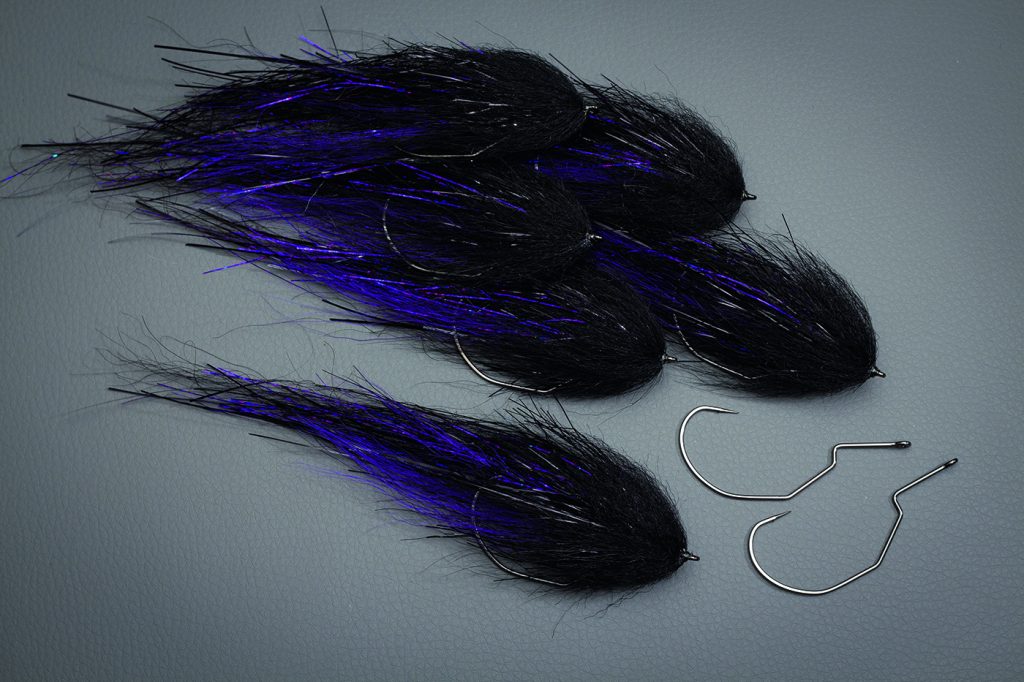

Reverse Bulkhead pattern
Hook: Ahrex PR 378 GB Swimbait 4/0.
Thread: White GPS 150D.
Tail: White buck tail and white Kanekalon (alternative EP-fibre or SF Blend), white Magnum Flashabou and silver Polar Flash (or holographic flash).
Body: White buck tail and white Kanekalon (alternative EP-fibre or SF Blend), white standard Flashabou and silver Polar Flash (or holographic flash).
Head: Yellow buck tail, gold Ripple Ice Fiber and to slim grizzle hackles. Orange Nayat and Hedron Strung Fuzzy Fiber spun in a dubbing loop.
